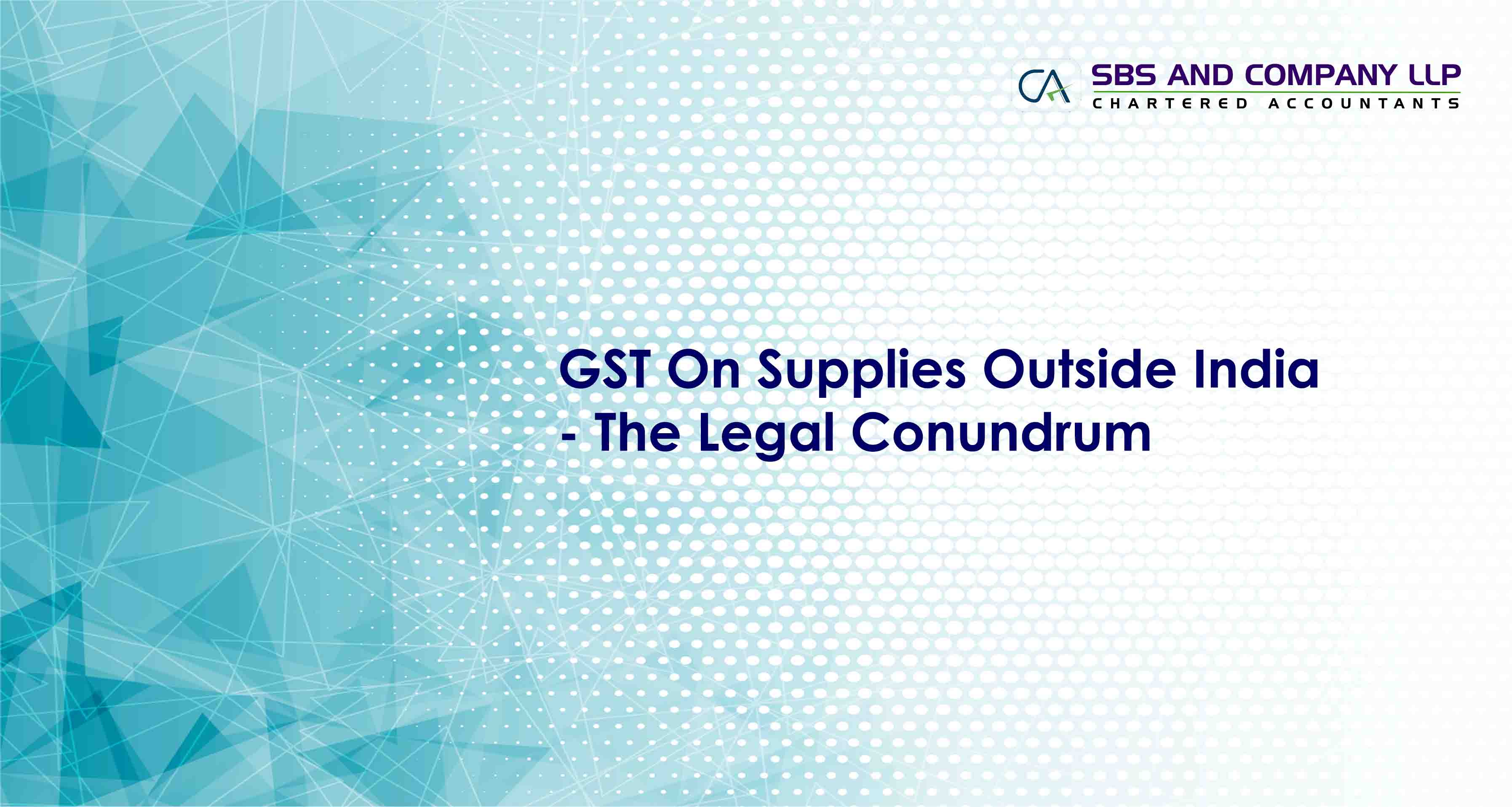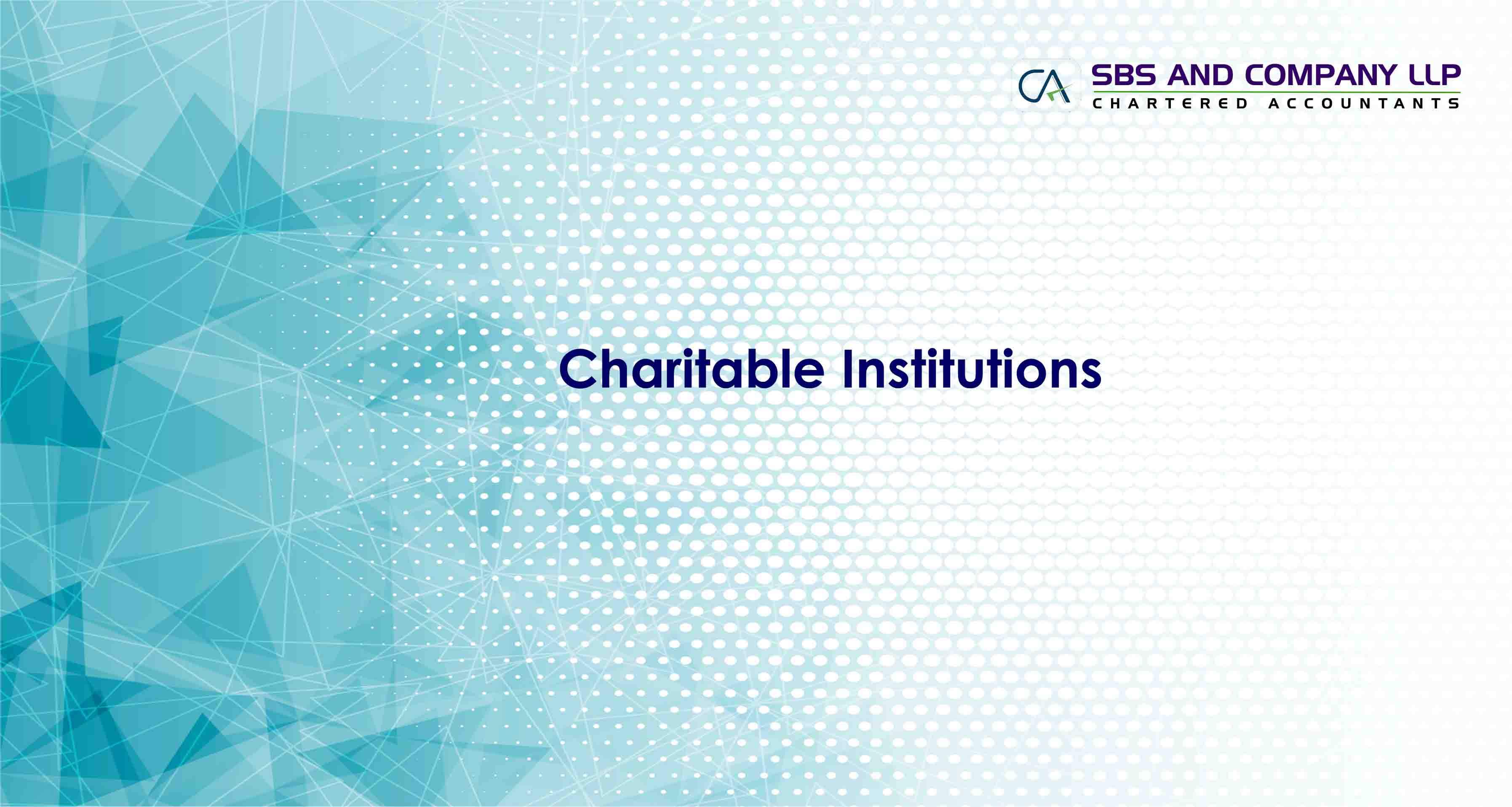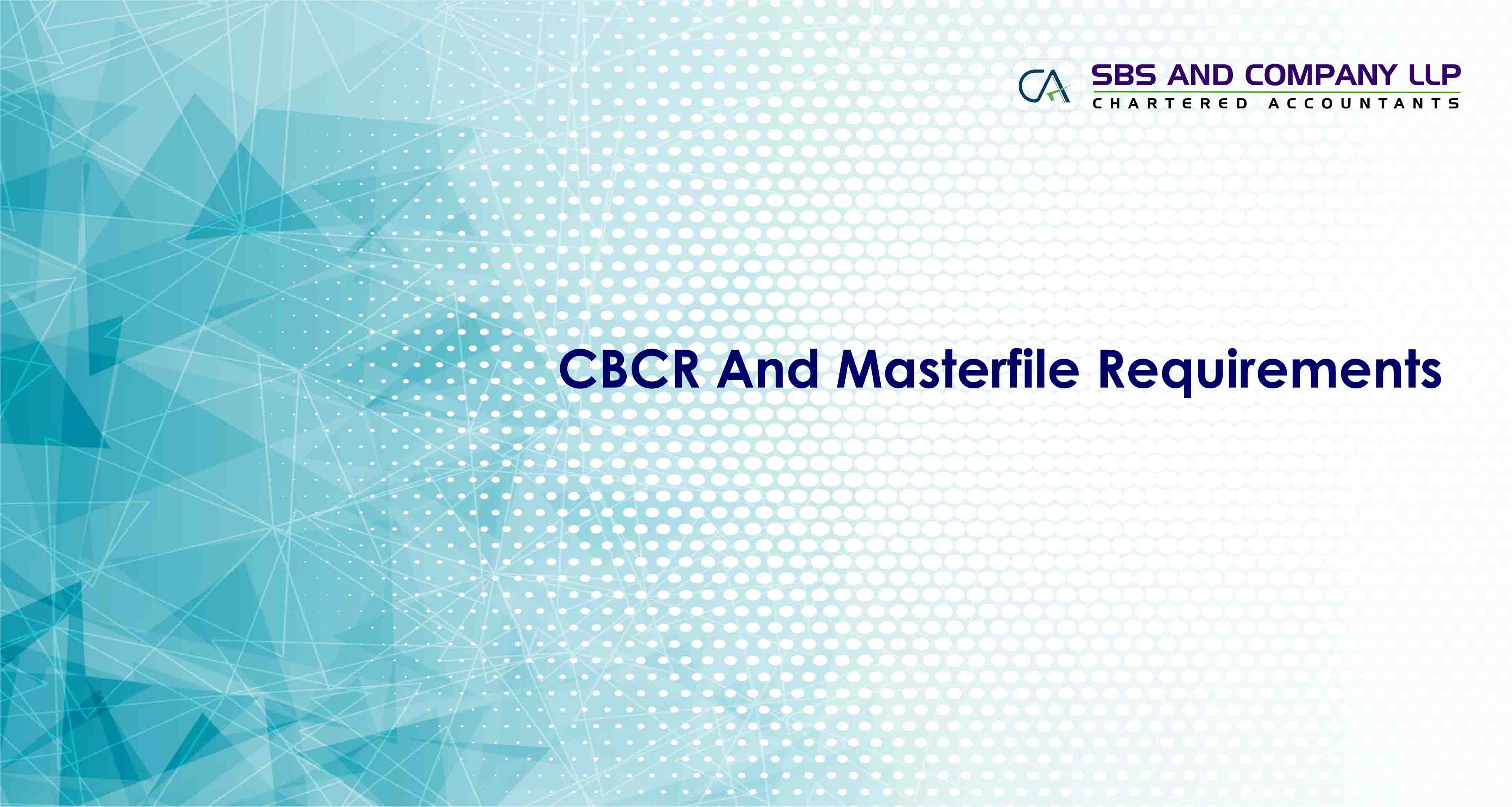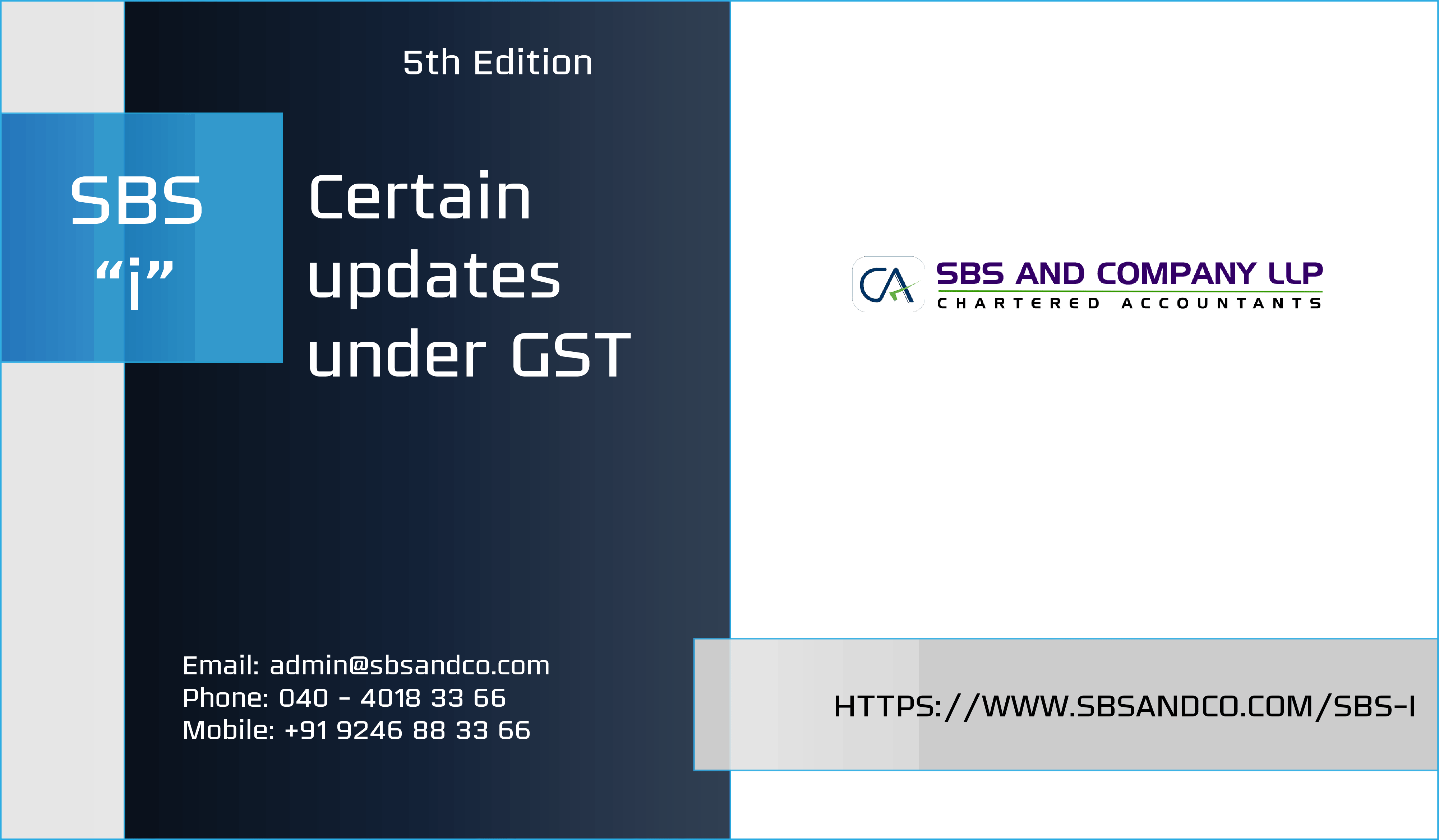In terms of Section 5 of IGST Act, 2017 Integrated tax is levied on all inter-state supplies of goods or services or both. Section 1 of the IGST Act, 2017 provides that the Act is applicable to whole of India except the state of Jammu and Kashmir. Section 7 provides for the list of transactions that become inter-state supplies. Section 7(5)(a) provides that inter-state supplies include those supplies where the supplier is in India and place of supply is outside India. This implies that IGST Law framework taxes those supplies which are supplied outside India also. In other words, IGST law has extra-territorial operation. This article aims to bring out the legal conundrum relating to this extra-territorial operation.
Before we proceed to examine the issue under GST law, it is noteworthy to examine legal position in this regard under Service tax law. Section 64(1) of the Finance Act, 1994 provides that the provisions of Chapter V dealing with service tax extends to whole of India except the state of Jammu and Kashmir. Further, sub-section (3) of the said section provides that it shall apply to taxable services provided on or after the commencement of Chapter V. The term ‘taxable service’ is defined under section 65B(51) to mean any service on which service tax is leviable under section 66B.
The charging section 66B which provides that service tax shall be levied on value of all services other than those services specified in negative list, provided or agreed to be provided in the taxable territory by one person to another and collected in such manner as may be prescribed. Section 65B(52) provides that the term ‘taxable territory’ is defined to mean the territory to which the provisions of this chapter apply i.e. the whole of India except the state of Jammu and Kashmir.To decide the place of provision of taxable services, Place of Provision of Service Rules, 2012 are notified exercising the power conferred under Section 66C of Finance Act, 1994.
Thus, on combined reading of all above provisions of Finance Act, 1994, the provisions of Finance Act, 1994 are applicable only to services other than those listed in negative list when provided or agreed to be provided within the taxable territory of India. This would imply that if a service is performed outside taxable territory, it may not be considered as a taxable service to attract service tax in India. This interpretation is backed by few judgments which are discussed in subsequent paras.
In the case of Cox & Kings India Limited vs CST, 2014(35) STR817(Tri-Del) wherein the Appellant has conducted outbound tours to Indian residents. It was held— “As services provided for outbound tours are provided and consumed outside the Indian territory; are beyond the province and purview of the provisions of the Act, the consideration received which corresponds and is relatable to services provided outside the Indian territory require to be excised by applying the doctrine of apportionment. On such vivisection, the consideration attributable to services provided outside the Indian territory must be excluded, as this is not subject to levy and collection of Service Tax, under provisions of the Act.
This conclusion is also the logical corollary of the non-derogable premise that Service Tax is not a tax on the pursuit of the profession of providing a taxable service but is a tax on the provision of a taxable service, a destination based consumption tax.”
11 | P a g e
SBS Wiki www.sbsandco.com/wiki
In the case of Grey Worldwide (India) Pvt Ltd vs. CST, [2015] 63taxmann.com31(Mumbai-CESTAT) wherein the Appellant has undertaken an advertisement campaign for Ministry of Tourism, Government of India in print and electronic media and outdoor hoardings in London, New York and Paris. Service tax liability to the extent of agency commission was discharged. Revenue required the appellant even to discharge the service tax liability on the amount of rent and other expenses incurred on such hoardings and would get covered under the category of ‘Advertising Agency services’. It was held that the said expenditure is incurred outside India and accordingly not subject to service tax in India.
In the case of Indian Association of Tour Operators vs UOI, the Delhi High Court has extensively examined the applicability of service tax under negative list based tax regime on outbound tours conducted by tour operators in India. The members of the association provided services to foreign tourists visiting India and neighbouring countries. The tour operator services are in the nature of intermediary services. The place of provision of service as per Rule 9 of the said rules is the location of service provider i.e. tour operator in India. Accordingly, the service is said to be taxable in India and in terms of Rule 6A of the Service Tax Rules, 1994, the service cannot be said to be exported outside India as the place of provision of service according to the said rules is in India even though service is provided to foreign tourists and convertible foreign exchange is received. It was held vide para 48 “As already noticed since by virtue of Section 64 (3) the whole of Chapter V applies only to taxable services, and Section 66 C of the FA falls in that very chapter, the rules made by the central government under Section 66 C has to necessarily be only in relation to taxable services viz., services provided in the taxable territory of India. The legal fiction of treating service rendered outside India to be a service rendered in India cannot be introduced by way of rules. That too would partake the character of an essential legislative function, which cannot be delegated to the central government. In fact such service cannot be brought to tax without amending Section 64 (3) of the FA.”
Thus, the Delhi High Court held that a service performed outside India cannot be considered as a taxable service in terms of section 64(3) of the Finance Act, 1994. Accordingly, the whole of chapter V of Finance Act, 1994 is not applicable to the said service. However, the issue involved in the present case is a composite service i.e. partly performed in India and partly outside India. In this regard, it has been held vide para 52—"Therefore, apart from the fact that the provision for taxing export of services has to be found in the statute itself (and not in the rules) the statute must also provide the machinery by which it can be determined with some certainty how much of the composite service can be said to be rendered in the taxable territory and of what value for the purposes of levy and collection of tax. If there is no such machinery provided, that would an additional ground of invalidation of the levy itself.”
In view of the above reproduced precedents on this issue, the following are the outcomes that would emanate:
- Services performed outside India will not be considered as taxable services in terms of Section 64(3). Thereby, the entire provisions of Finance Act, 1994 are not applicable to them.
- The rule making power conferred section 66C was only to deal with taxable services performed in India. Thus, the Place of Provision of Service Rules, 2012 and Rule 6A of Service Tax Rules, 2006 which determines the place of provision of service and export of service respectively are ultra vires the Statute as essentially the legal fiction of treating services rendered outside India as rendered in India would affect the levy; such provisions cannot be introduced by way of rules. It is essentially a legislative function.
12 | P a g e
|
GST on supplies outside India— the legal conundrum |
SBS Wiki www.sbsandco.com/wiki
- In case of composite services i.e. partly performed in India and partly outside India, Statute should provide for some machinery to vivisect the portion of services performed in India from those performed outside India. Absence of such machinery would render the levy invalid.
With this understanding of the issue under Finance Act, 1994, we now move to IGST law. Unlike Section 64(3) of the Finance Act, 1994, there is no corresponding provision under Section 1 of IGST Act, 2017 to expressly restrict the scope of applicability of law only for taxable supplies undertaken within India. Nevertheless, section 1 restricts the applicability of legislation only to the territory of India. Further, the principles relating to place of supply which have a bearing on levy of tax are provided within the statute and not by way of rules.
As levy of IGST is on inter-state supplies, section 7 provides for the principles to determine inter-state supply. Accordingly, the following cross border supplies are said to be inter-state supplies—
- Supplies of goods imported into the territory of India till they cross the customs frontiers of India. The expression ‘import of goods’ has been defined under section 2(10) to mean bringing goods into India from a place outside India.
- Supplies of services imported into the territory of India. The expression ‘import of services’ has been defined under section 2(11) to mean supply of any service where the supplier is located outside India; the corresponding recipient is in India and the place of supply of services is in India.
- Supply of goods or services or both when the supplier is located in India and place of supply is outside India.
The only type of cross border transaction that will not become an inter-state supplyare the supplies of goods or services or both when the supplier is located outside India and place of supply is also outside India.
In order to determine the place of supply of services in case of cross border transactions, section 13 provides for the principles to determine the place of supply. These are identical to the erstwhile Place of Provision of Services Rules, 2012. In case of supply of services of the nature of outbound tours to foreign tourists, display of adds outside India, the performance is completely outside India. They are of the nature of intermediary services. Accordingly, in terms of section 13(8), the place of supply of said services is the location of the supplier i.e. India. Thus, IGST law in order to tax these transactions by legal fiction deems that the place of supply of these services is in India though their performance is outside India.
In this regard, the three essential issues that arise for legal consideration are;
- whether the extra-territorial operation of IGST law to deem certain transactions performed outside India are supplied in India is valid.
- In case of supplies performed outside India by a supplier located in India, can it be concluded that tax is not applicable by virtue of the of Section 1 of IGST Act, 2017 which extend the law to whole of India alone and
13 | P a g e
|
GST on supplies outside India— the legal conundrum |
SBS Wiki www.sbsandco.com/wiki
- Whether IGST Law has any machinery provisions to vivisect composite supplies involving performance in India and outside India in order to tax the portion attributable to performance in India.
The issue relating to extra-territorial operation of tax laws is examined by Supreme Court under Income Tax, in the case of GVK Industries Limited vs. ITO, [2011] 10 taxmann.com 3(SC), where in it was held vide para 76 – “Parliament may exercise its legislative powers with respect to extra-territorial aspects or causes, events, things, phenomena (howsoever commonplace they may be), resources, actions or transactions and the like, that occur, arise or exist or may be expected to do so, naturally or on account of some human agency, in the social, political, economic, cultural, biological, environmental or physical spheres outside the territory of India and seek to control, modulate, mitigate or transform the effects of such extra-territorial aspects or causes, or in appropriate cases, eliminate or engender such extra-territorial aspects or causes, only when such extra-territorial aspects or causes have, or are expected to have, some impact on, or effect in, or consequences for: (a) the territory of India, or any part of India; or (b) the interests of, welfare of, well being of, or security of inhabitants of India and the Indians.”
Thus, in view of the above decision of Supreme Court, Parliament has power to make a law that has extra-territorial operation when the aspects or causes have or expected to have some effect or impact on the territory of India or it will affect the interests, welfare or well-being of India. In the case of supplies performed outside India covered under section 7(5), the supplier is located in India. This may constitute an important aspect or cause in order to ensure the validity of the extra-territorial operation of IGST law.
With respect to the third issue relating to composite supplies involve performance partly in India and partly outside India, going by the above discussed legal position, tax can be levied only on the portion of supplies related to India. The Statute should also provide for legal machinery to vivisect these composite supplies. However, section 13(6) provides that in case of services relating to repairs of goods, services requiring the physical presence of individual to provide services, immovable property related and event based services, where a service is supplied in more than one location including the location in taxable territory, the place of supply is said to be India. This would imply that even portion of service performed outside the taxable territory would be subject. It appears that the provisions of section 13(6) is in direct conflict with section 1.
In view of above discussion, the taxability of supplies performed outside India under IGST law has extra-territorial operation. However, issues as discussed may require judicial examination.








